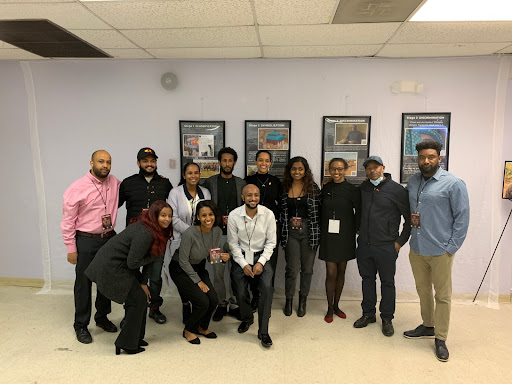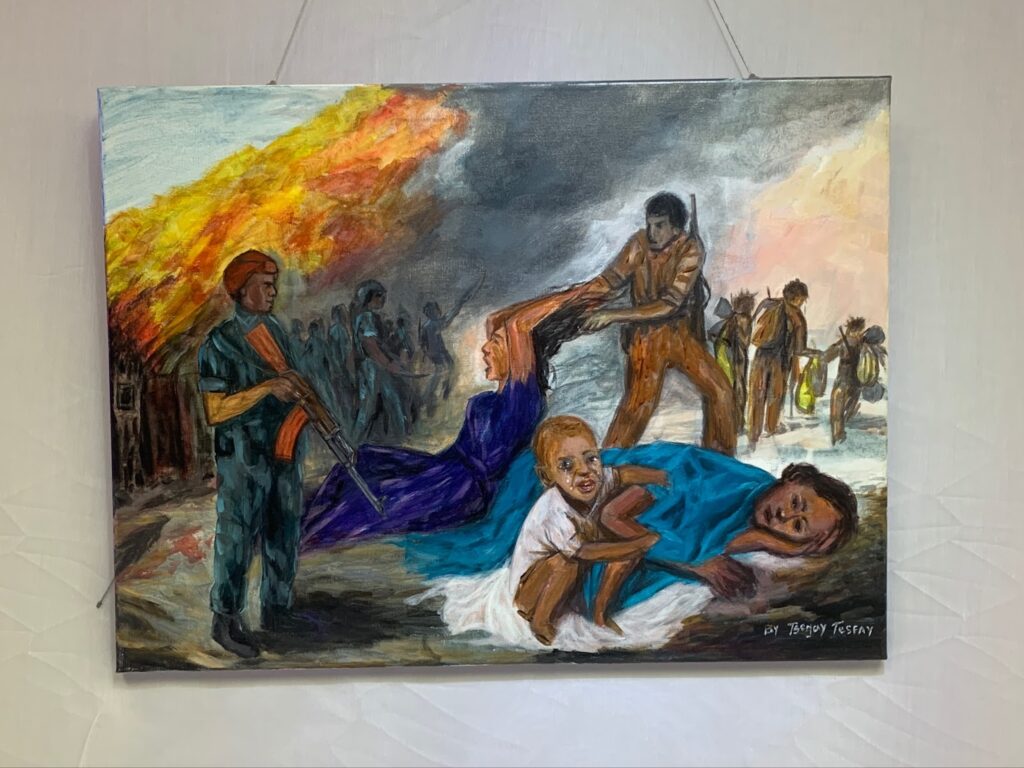
After one year, the remembrance of the Tigray genocide took place on Nov. 4. Despite the thousands of Tigrayan lives lost during the ongoing conflict in Ethiopia, the subject of Tigrayan massacres has not received domestic and global attention.
The neglect on the matter is why a group of activists decided to present an art exhibition aptly titled: “Call it a Genocide.”
The exhibition is an exploration of how the conflict began and how it quickly became a long list of horrifying events that impacted each Tigrayan differently.
The weight of the exhibition was immediately felt when tickets were distributed. Each ticket had the name of a Tigrayan victim, ones that could be seen and read about in one of the many stations, functioning as testimonials.
Photographs of the victims were placed next to the entrance to clearly show the atrocities committed by federal troops have ruined lives and scarred individuals like Haftom Gebretadik.
Gebretadik, a 17-year-old boy located near Hawzen, had his right hand amputated due to injuries sustained from an Ethiopian artillery attack. Stories of sexual assault, abduction, mutiliation and brutality are not uncommon for the citizens of Tigray.
The ubiquity of these heavy themes is shown in the artwork presented by the exhibition.
“I have been doing art for years,” artist and activist Tsegay Tesfay said. “Because of this genocide, I have created this art to reflect what’s happening in Tigray.”

Tesfay’s art contained haunting detail in the facial expressions of the victims he portrayed. Whether it was the piercing eyes of a child losing his family or the overwhelming sadness of a mother losing her children, Tesfay’s art captured a feeling of loss and fear that was palpable.
There was a common theme found in each body of work: womanhood.
The exhibition showcased the resilience of Tigrayan women, as seen in artist Mahder Tella’s piece titled, “A Sun Also Rises in Tigray.”
Tella’s artwork was unlike the others on display. It depicted the beauty of Tigrayan women while also creating a texture that was unique to that particular work.
“Let me just get a bunch of roofing nails and get some yarn,” Tella said as she described her creative process with the piece. “I bought twenty of the same color, just different shades of about every color. I wanted to represent all types of Tigrayan women, so I wanted to use different shades of brown and gold… I really wanted to commemorate the women in our community.”
Culturally, brown and gold are colors often worn by Tigrayan women. Tella’s piece, matching that of a sculpture rather than a painting, encapsulated the joy that can be seen in Tigray.
As the exhibition continued, an interactive map of Ethiopia was presented from a projector that was connected to a laptop.
The map gave visitors the opportunity to scroll through and read about the multitude of massacres perpetrated by Ethiopian and Eritrean federal troops in specific locations. Facts about Tigray and its neighboring regions were given in great detail, along with links pointing to reputable sources.
“Call it a Genocide” was a moving and horrifying depiction of the current Ethiopian conflict that has led to countless Tigrayan deaths. The trauma witnessed through the lens of art created a distinctive experience that was produced by those directly impacted by the conflict.
“I just ask for everybody to show support,” Tella said. “We can’t not do anything and we ask other people to stand up because, like we’ve seen, there are a lot of people who have gone silent.”
Copy edited by Lauryn Wilson

